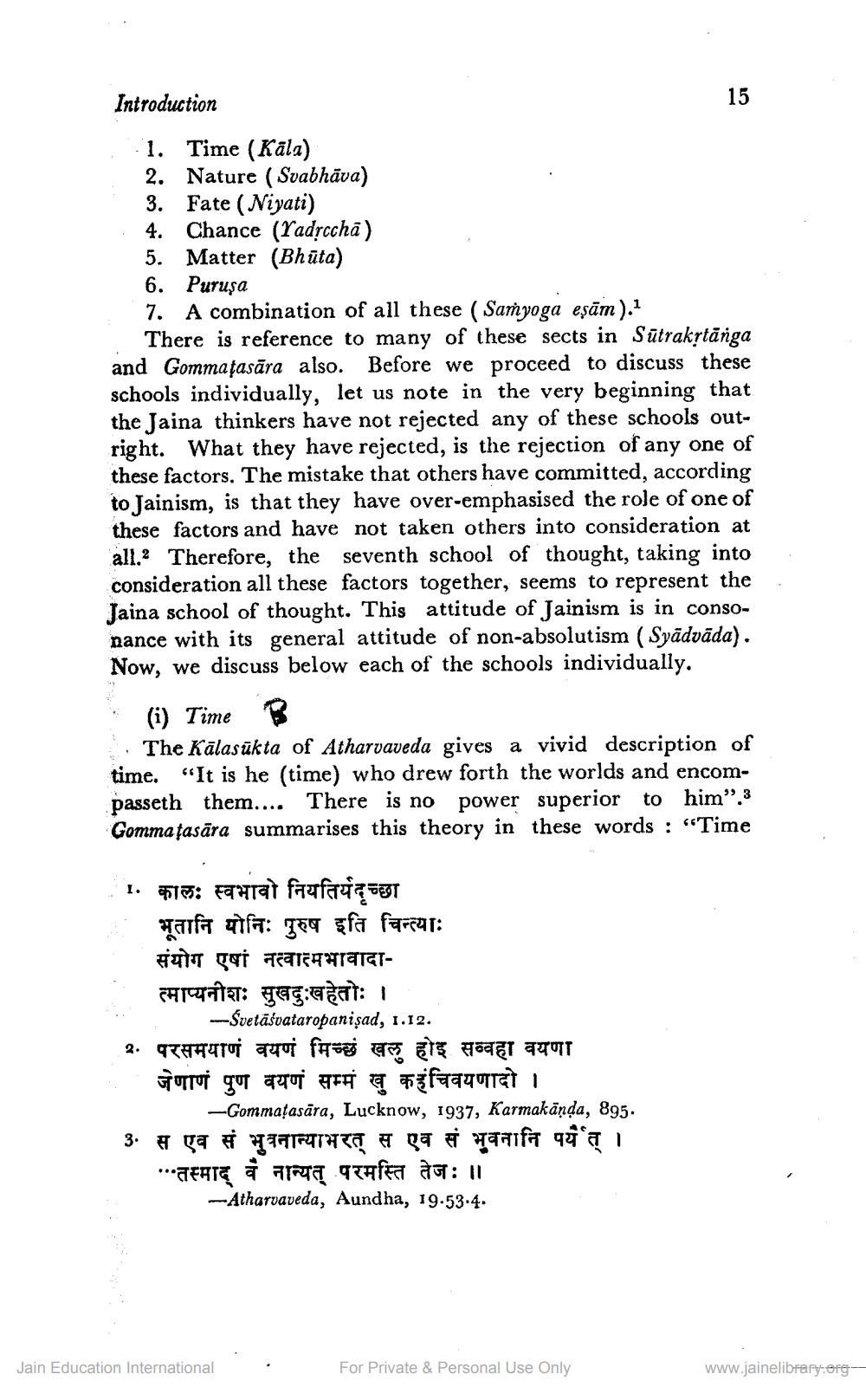________________
Introduction
15
1. Time (Kāla) 2. Nature (Svabhāva) 3. Fate (Niyati)
Chance (Yadrccha) 5. Matter (Bhūta) 6. Puruşa 7. A combination of all these (Samyoga eșām).1
There is reference to many of these sects in Sūtrakrtānga and Gommațasāra also. Before we proceed to discuss these schools individually, let us note in the very beginning that the Jaina thinkers have not rejected any of these schools outright. What they have rejected, is the rejection of any one of these factors. The mistake that others have committed, according to Jainism, is that they have over-emphasised the role of one of these factors and have not taken others into consideration at all.2 Therefore, the seventh school of thought, taking into consideration all these factors together, seems to represent the Jaina school of thought. This attitude of Jainism is in consonance with its general attitude of non-absolutism (Syādvāda). Now, we discuss below each of the schools individually,
(i) Time B · The Kālasūkta of Atharvaveda gives a vivid description of time. “It is he (time) who drew forth the worlds and encompasseth them.... There is no power superior to him”.3 Gommațasāra summarises this theory in these words : “Time
1. 15: Faurat faufaezagot
भूतानि योनिः पुरुष इति चिन्त्याः संयोग एषां नत्वात्मभावादात्माप्यनीशः सुखदुःखहेतोः ।
--Svetāśvataropanişad, 1.12. परसमयाणं वयणं मिच्छं खलु होइ सव्वहा वयणा जेणाणं पुण वयणं सम्म खु कहंचिवयणादो ।
-Gommațasāra, Lucknow, 1937, Karmakānda, 895. 3. स एव सं भुवनान्याभरत् स एव सं भुवनानि पर्यत् । "तस्माद् व नान्यत् परमस्ति तेजः ॥
-Atharvaveda, Aundha, 19.53.4.
Jain Education International
For Private & Personal Use Only
www.jainelibrary.org




